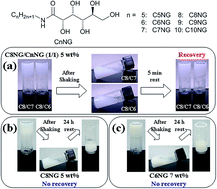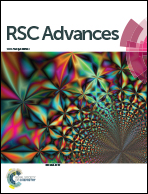Onset of mixing-induced thixotropy in hydrogels by mixing two homologues of low-molecular-weight hydrogelators†
Abstract
We determined the onset of thixotropy in hydrogels when two homologues of low-molecular-weight hydrogelators, N-alkyl-D-glucamides, were mixed. Intriguingly, the hydrogels generated from the individual components did not show such behaviour. The mixing induced onset of thixotropy might be attributed to the improved network quality.


 Please wait while we load your content...
Please wait while we load your content...